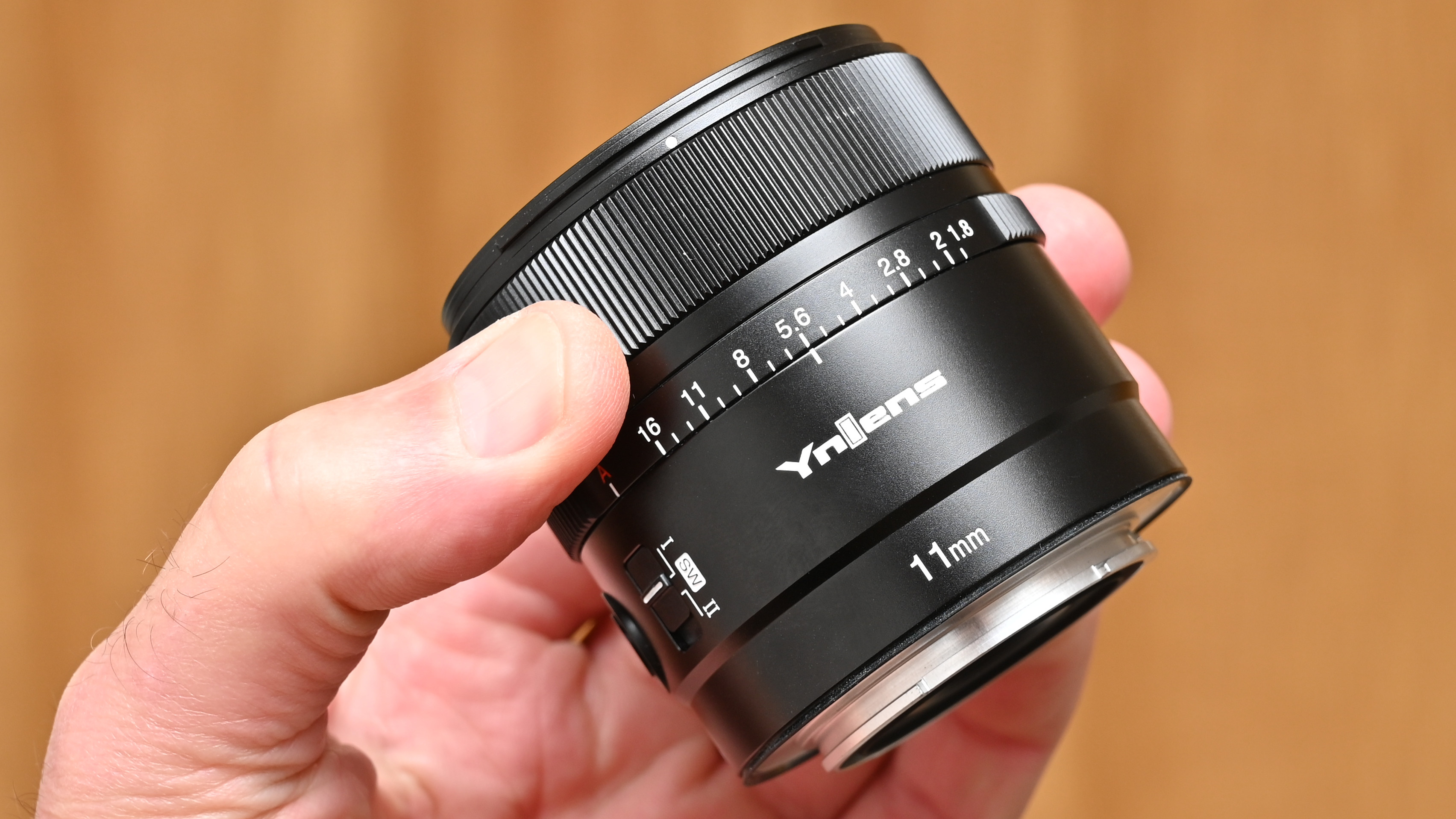
I’ve got a bit of a soft spot for Yongnuo lenses. Made in China, they tend to be of good quality and outrageously good value for money. I’ve bought Yongnuo YN50mm F1.8Z DF DSM and Yongnuo YN85mm F1.8Z DF DSM lenses for my full-frame Nikon Z-system cameras, to add to my permanent collection, and recently reviewed the Yongnuo YN33mm F1.4Z DA DSM WL Pro which, like this 11mm lens, is designed for APS-C format bodies and is compatible with Yongnuo’s optional BR-L1 remote controller.
Unlike the 33mm lens, however, it’s so far only available in Sony E-mount, rather than catering to multiple makes of camera. Even so, it aims to be one of the best lenses for the Sony A6700, and other crop-sensor Sony mirrorless cameras.
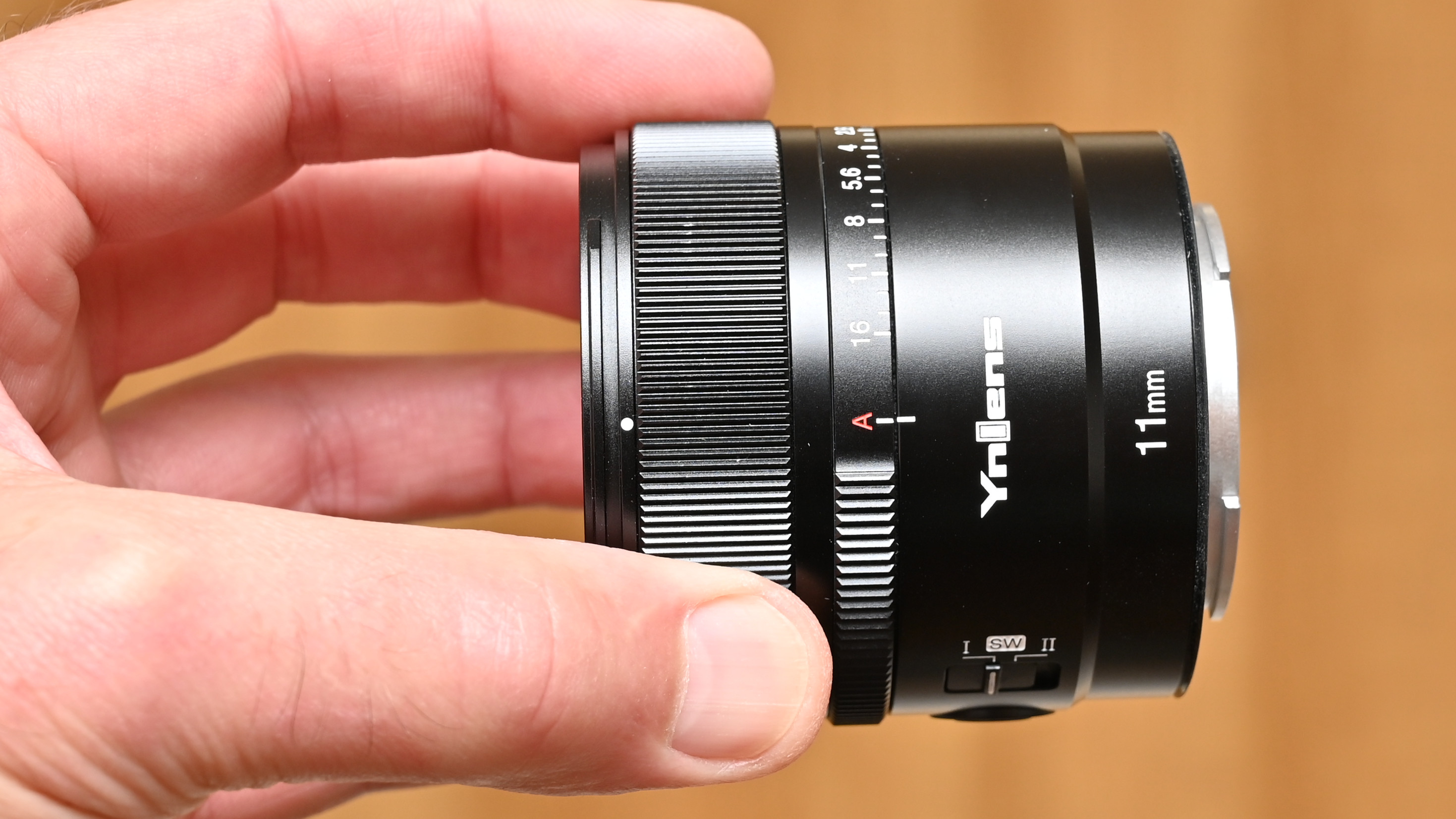
Yongnuo YN11mm F1.8S DA DSM WL: Specifications
Yongnuo YN11mm F1.8S DA DSM WL: Price
Ultra-wide-angle prime and zoom lenses often command the big bucks, especially if they come complete with fast aperture ratings. Despite combining an ‘effective’ 16.5mm focal length in full-frame terms with a fast f/1.8 aperture, this Yongnuo lens is relatively inexpensive. It has a budget-friendly list price of around $300/£240. That makes it potentially great value for anyone wanting a really expansive perspective when using an APS-C format Sony E-mount camera.
Yongnuo YN11mm F1.8S DA DSM WL: Design & Handling
I remember when we used to call mirrorless cameras ‘compact system cameras’. Sony’s APS-C format bodies are certainly slimline and the Yongnuo 11mm follows suit. It’s barely more than a couple of inches in length, weighs in at just 260g, and has a small 58mm filter attachment thread. The filter thread is definitely worth a mention, as many ultra-wide-angle lenses have a built-in hood, which precludes the fitment of filters that are often favored for creative landscape photography, and more besides.
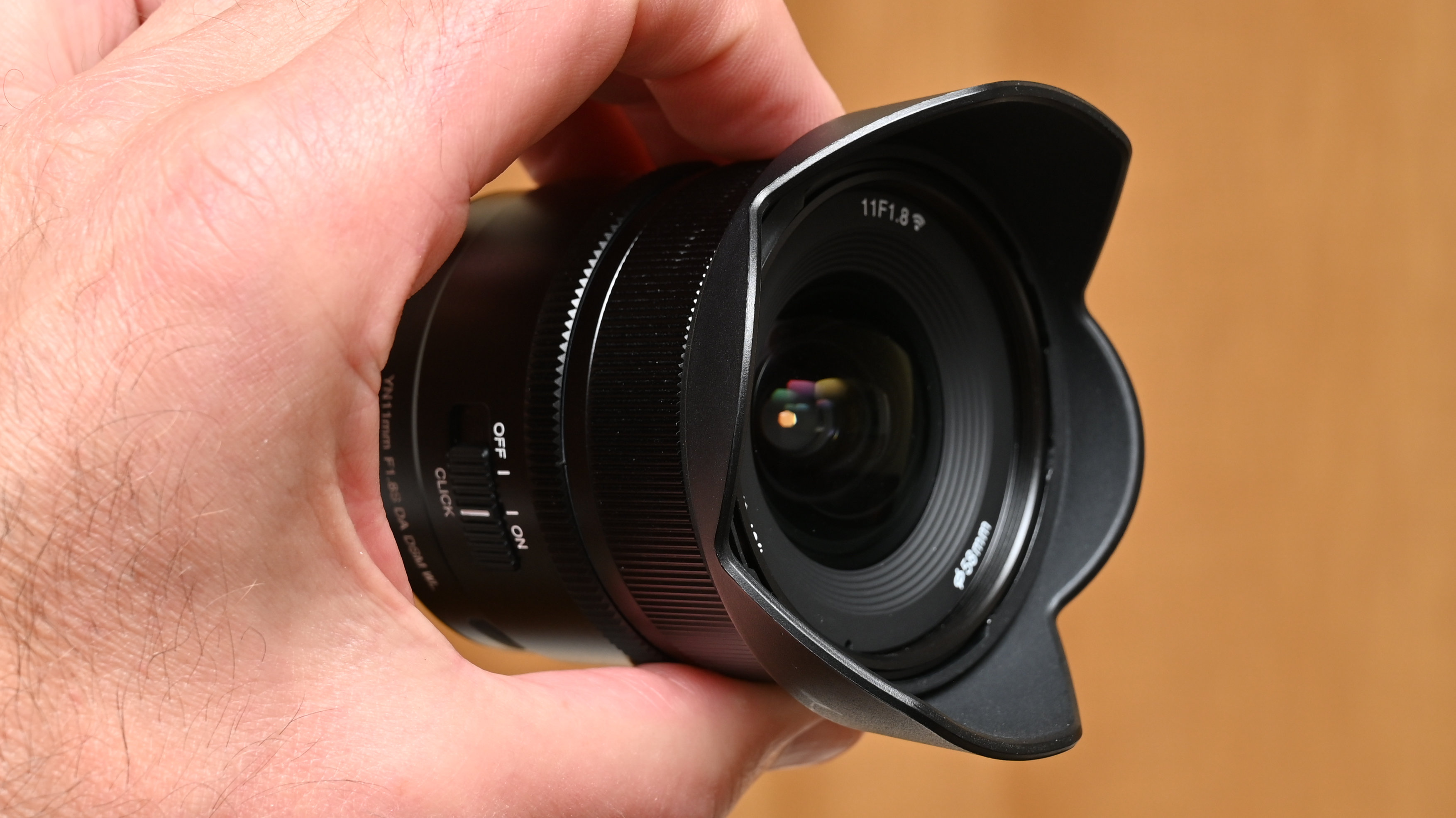
Despite its very compact and lightweight design, there’s a lot shoehorned into this Yongnuo lens, and I’m not just talking about the expansive 105-degree viewing angle from its ‘effective’ 16.5mm focal length and its fast f/1.8 aperture rating. That makes the lens ideal not only for landscapes and cityscapes but also for dimly lit architectural interiors and even astrophotography.
So what else is packed into the lens? For starters, there’s an aperture control ring complete with a click/de-click switch, catering to both stills and movie capture. You also get a customizable function button, nominally for autofocus hold. And speaking of autofocus, there’s the now typical linear stepping motor which is rapid for stills and enables smooth, virtually silent autofocus transitions when shooting video.
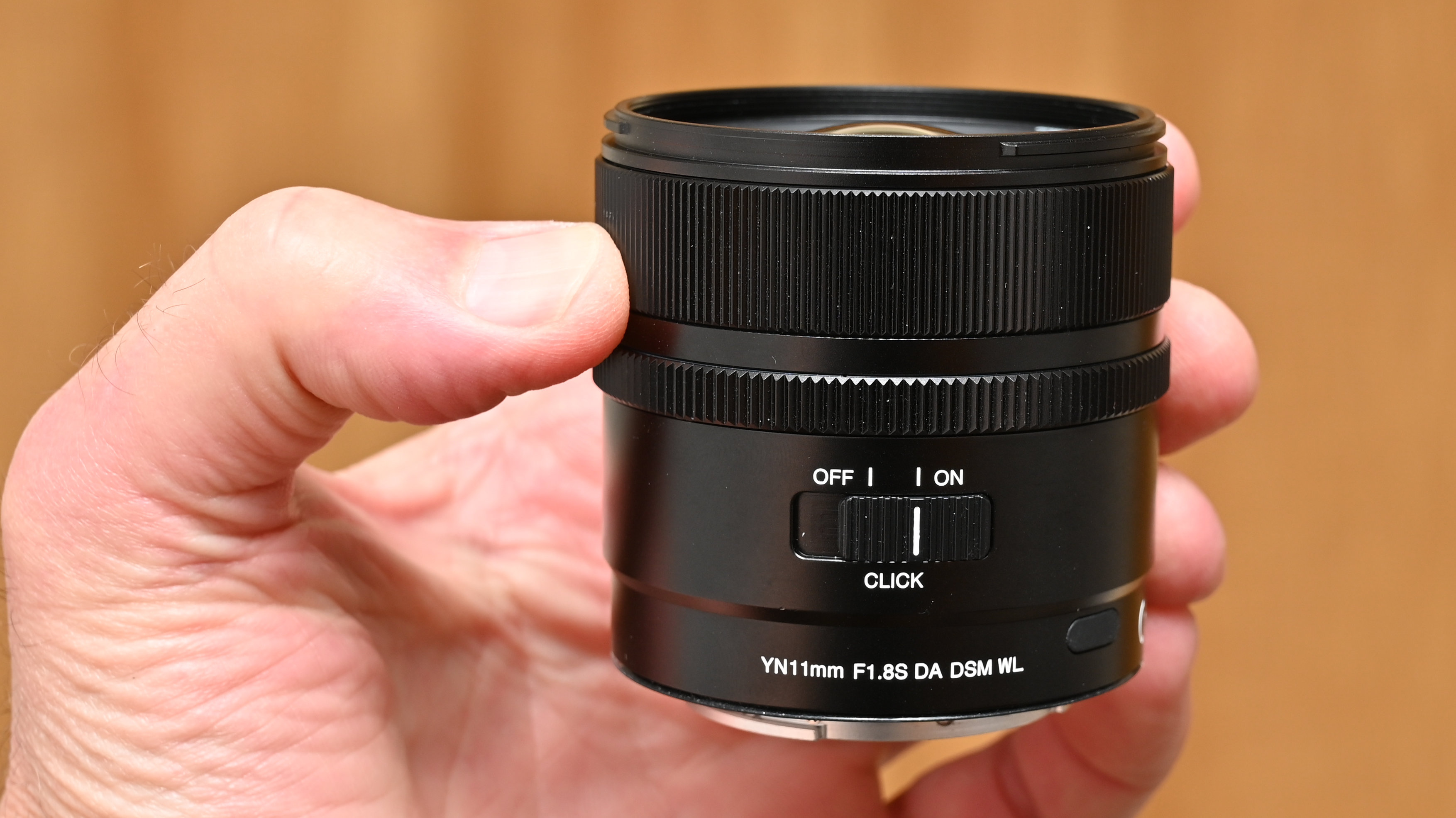
And there’s more. Surprisingly, considering the budget price tag, the lens has a smartly finished anodized aluminum casing and a metal mounting plate complete with a weather-seal gasket. A USB-C port is also featured, for applying firmware updates if and when needed. Going beyond the often-featured autofocus/manual focus switch, the one fitted to this lens also enables trick functions with Yongnuo’s BR-L1 remote control, sold separately for around $59/£47.
The lens’s built-in 2.4GHz radio frequency communication enables the use of the remote controller’s Fn button, A and B buttons, a rotary dial, and a little mono LCD screen. After pairing it with the lens, you can use the remote for adjusting the aperture and for manual focusing, as well as for A-B focusing, shifting between two preset focus distances along with setting the speed of the transition. As with the lens, the optional remote features a USB-C port, again for applying firmware updates but also for charging its internal battery.
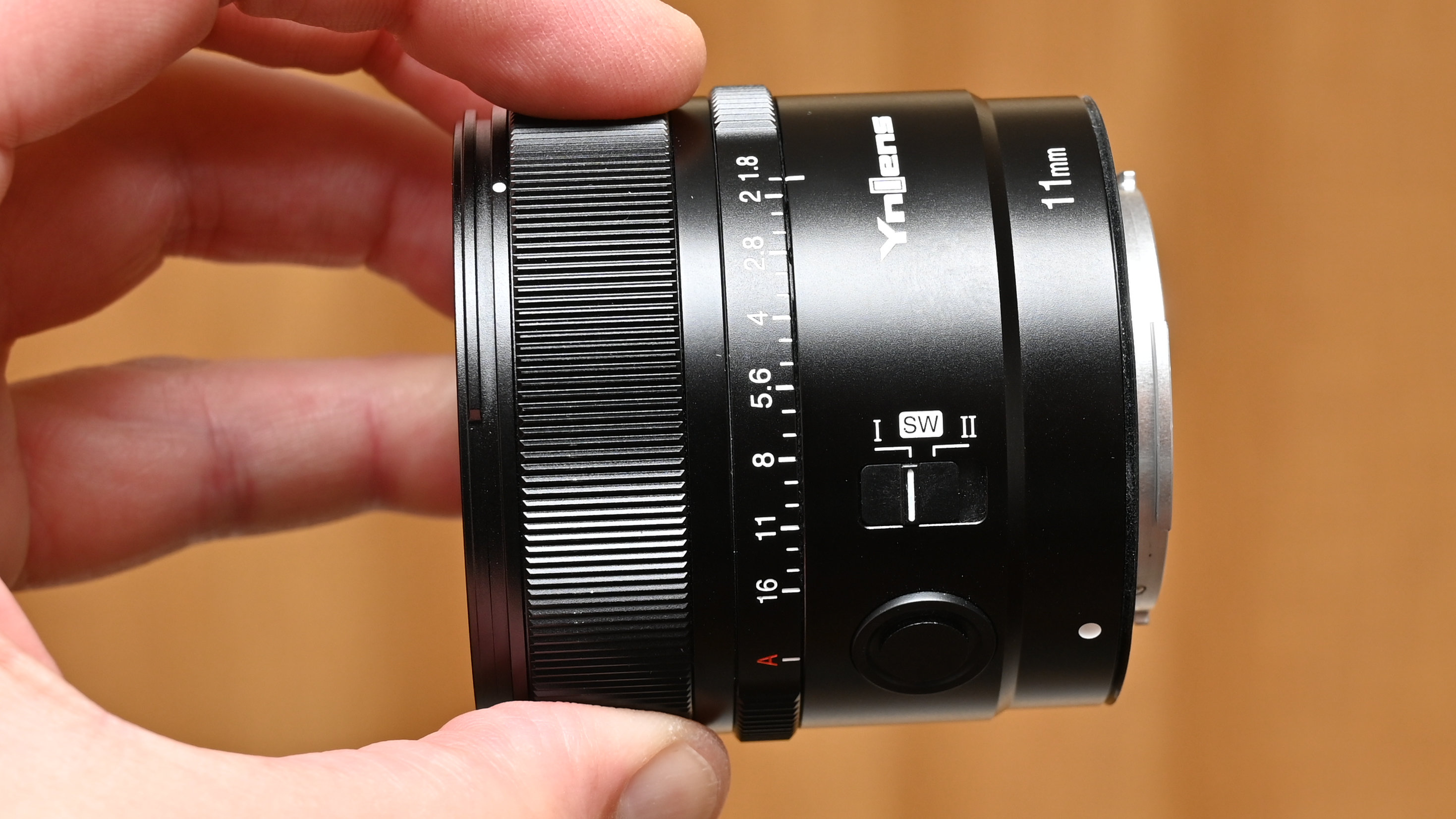
Let’s not forget the glass, which is naturally a key feature of any lens. There are 10 optical elements in total, including 2 aspherical elements, Low Dispersion and Ultra-low Dispersion elements, and 3 HR (High Refractive index) elements. The overall aim is to optimize clarity, contrast, and color fidelity while keeping color fringing and other aberrations to a minimum. The front element has a fluorine coating to repel moisture and grease, and a petal-shaped, bayonet-fit hood is supplied with the lens.
As usual, this is reversible to reduce stowage space, and the pinch-type front cap enables easy fitment and removal even with the hood in its operational, front-facing orientation. Suffice it to say, that the feature set and handling extras are both plentiful.
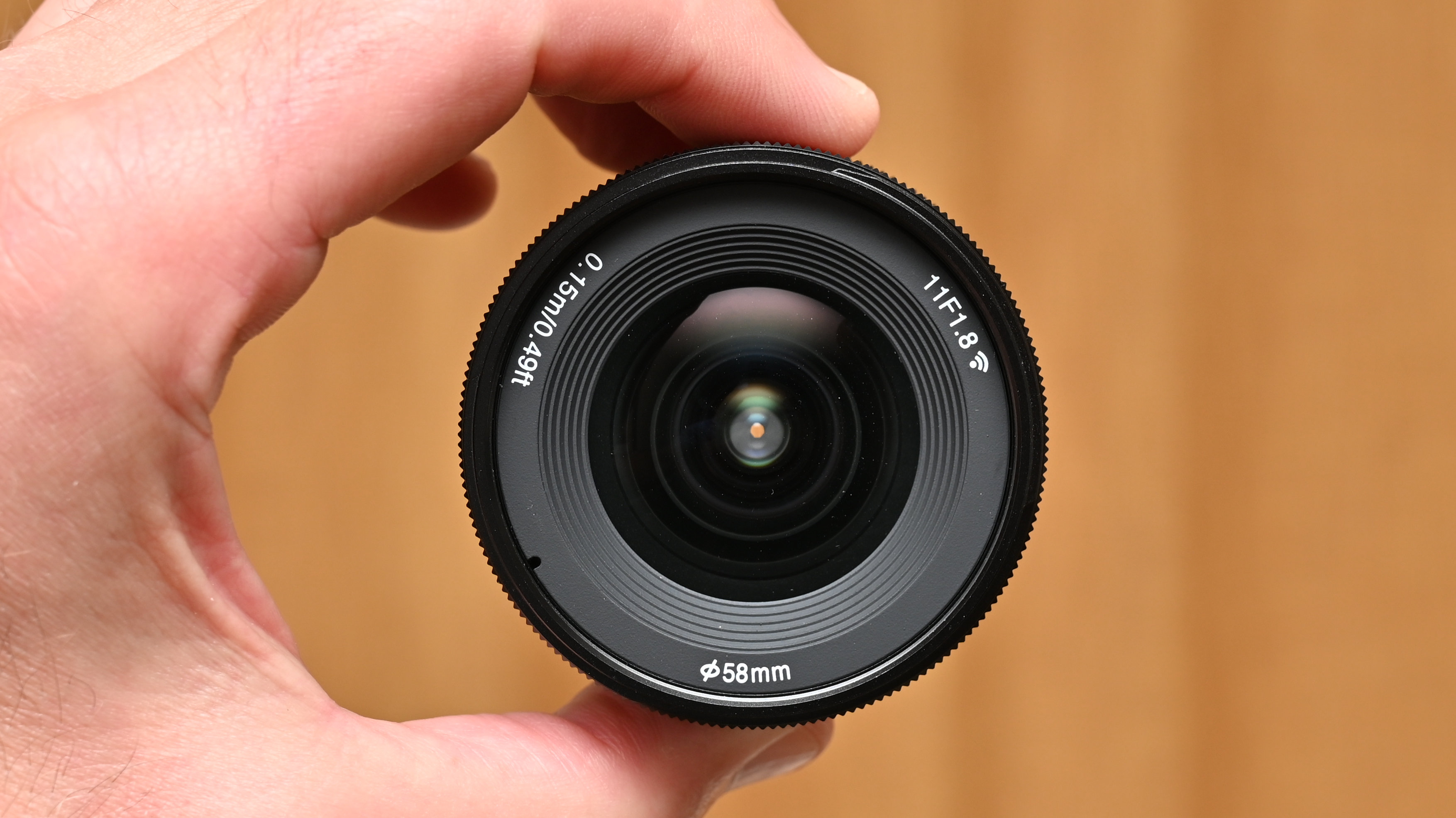
Amongst their other virtues, ultra-wide-angle lenses are great for exaggerating perspective for creative effect, stretching the apparent distance between close foreground and background areas within a scene. You can certainly get in close with this lens, thanks to its minimum focus distance of 15cm (6 inches) or about 7.5cm (3 inches) from the front of the lens.
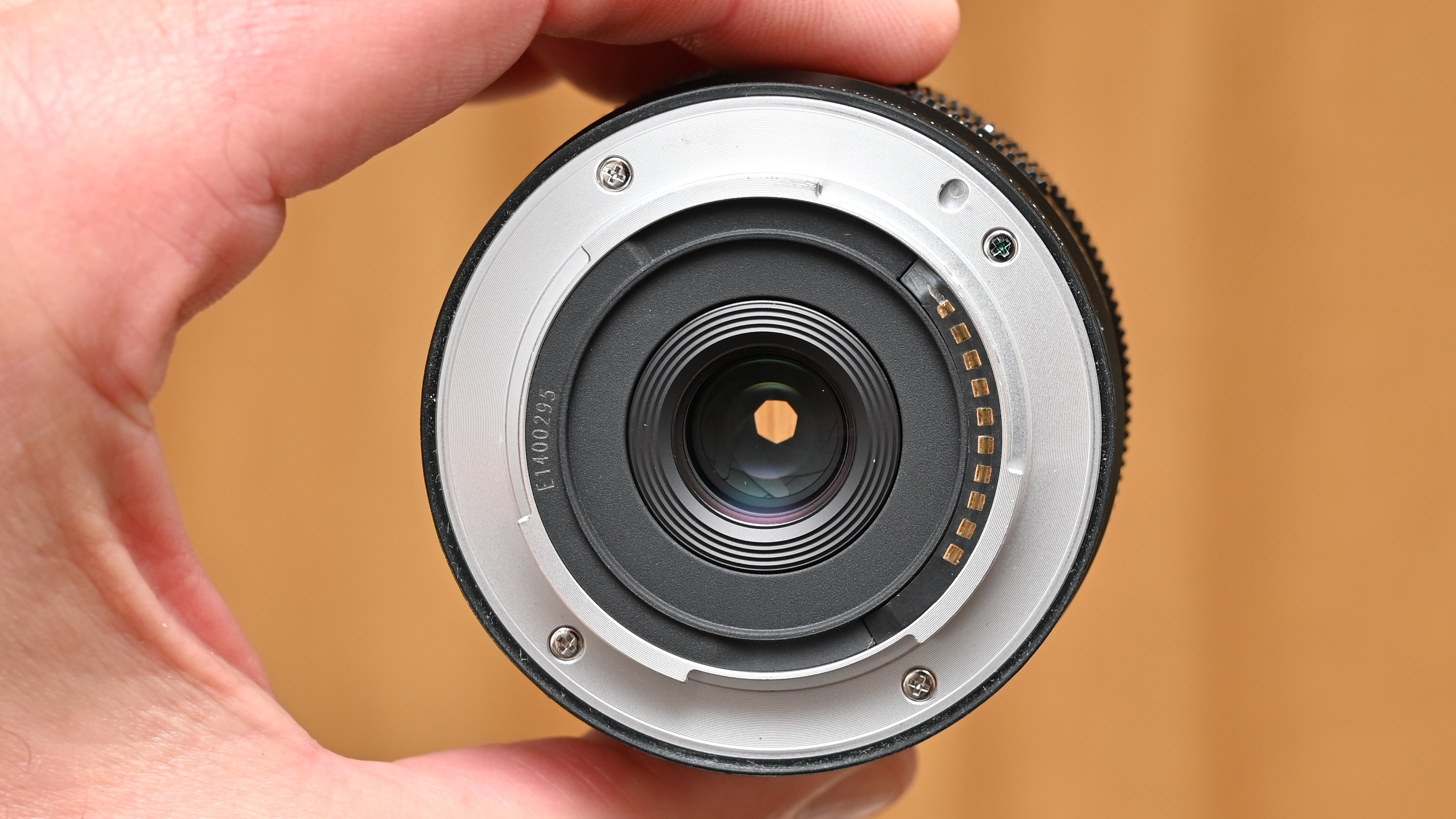
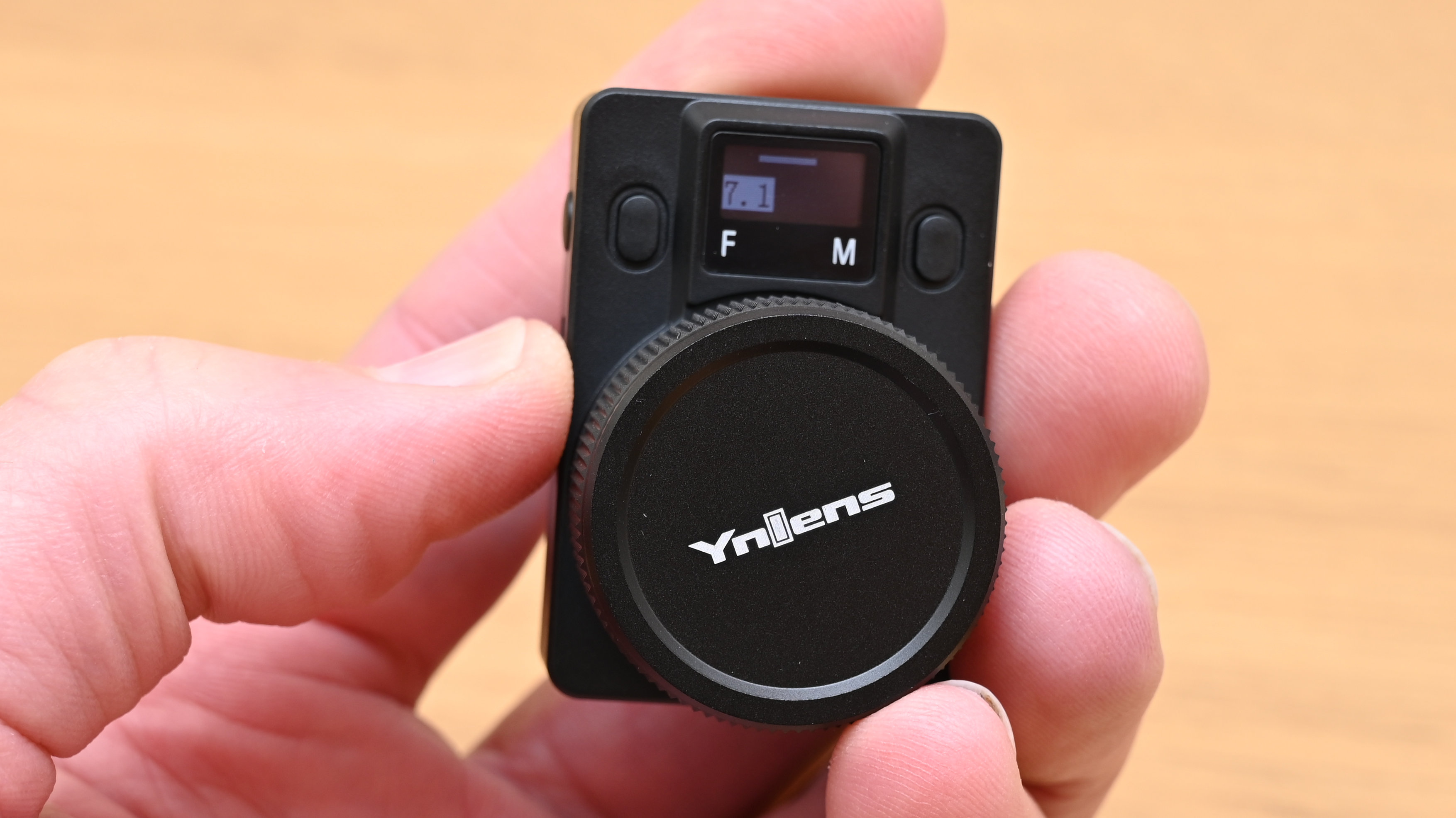
Yongnuo YN11mm F1.8S DA DSM WL: Performance
Levels of sharpness are impressive in the central region of the image frame, even when shooting wide-open at f/1.8. It’s a big ask to expect great sharpness at the edges and corners of the frame with such a wide-angle lens at this aperture, especially one that’s physically so small. Even so, wide-open corner sharpness is fairly reasonable but, as I’d expect, it pays to stop down to f/5.6 or f/8 for the best sharpness towards the edges and corners.
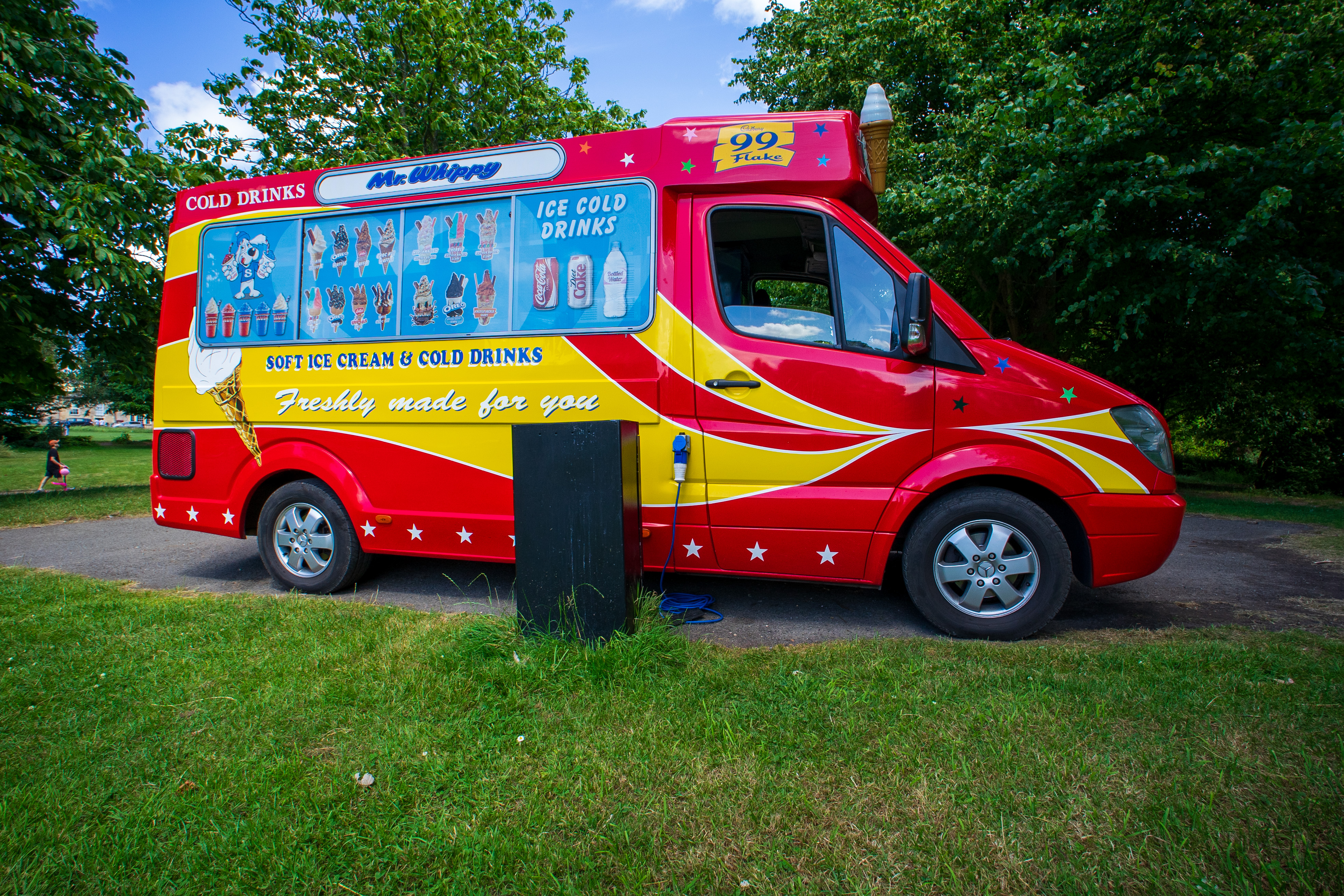
Contrast and clarity are good and the lens delivers good color rendition. Color fringing can be noticeable around high-contrast transitions towards the edges and corners of the frame but it’s of a fairly low order and easily within the remit of automatic correction. The same goes for barrel distortion. Again it’s only minor when uncorrected and the Yongnuo certainly doesn’t depend on automatic in-camera correction for this, unlike many recent lenses designed for mirrorless cameras.

The aperture is controlled by a 7-blade diaphragm. Stop down to narrow apertures and the lens is capable of producing striking 14-point sun stars, if you’re into that sort of thing. Designing such a physically small ultra-wide-angle lens, something has to give. Vignetting is quite noticeable at wide apertures but diminishes as you narrow the aperture to f/4 and beyond. All in all, the little Yongnuo punches well above its small size, weight, and price tag.
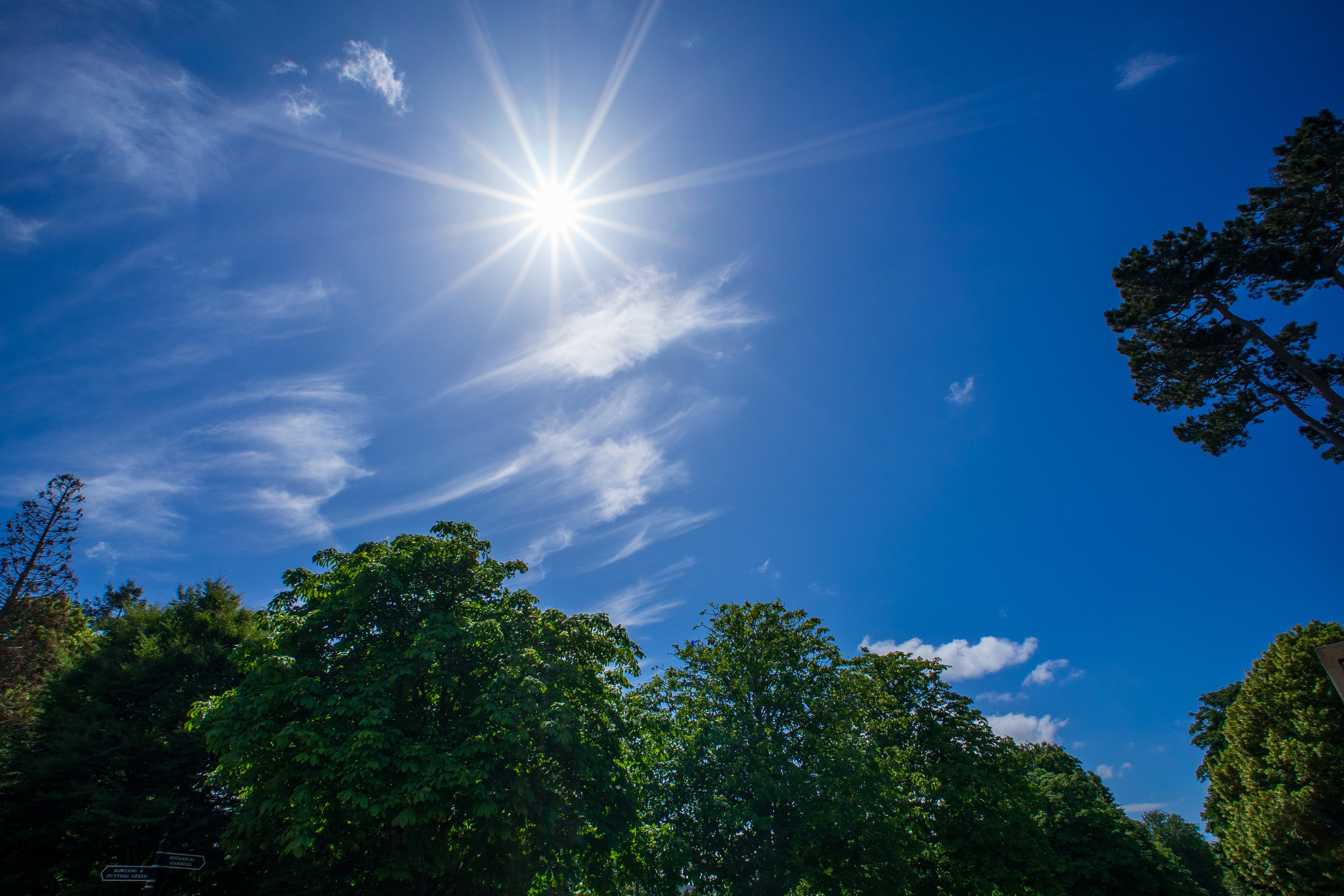
Yongnuo YN11mm F1.8S DA DSM WL: Sample Images
The following gallery of example shots was taken on a sunny day in the UK city of Bath, with the lens mounted on a Sony A 7II camera body in APS-C crop mode. The included images are featured without any automatic in-camera corrections for peripheral illumination, color fringing or distortion. What you see is what you get, with no corrections applied.


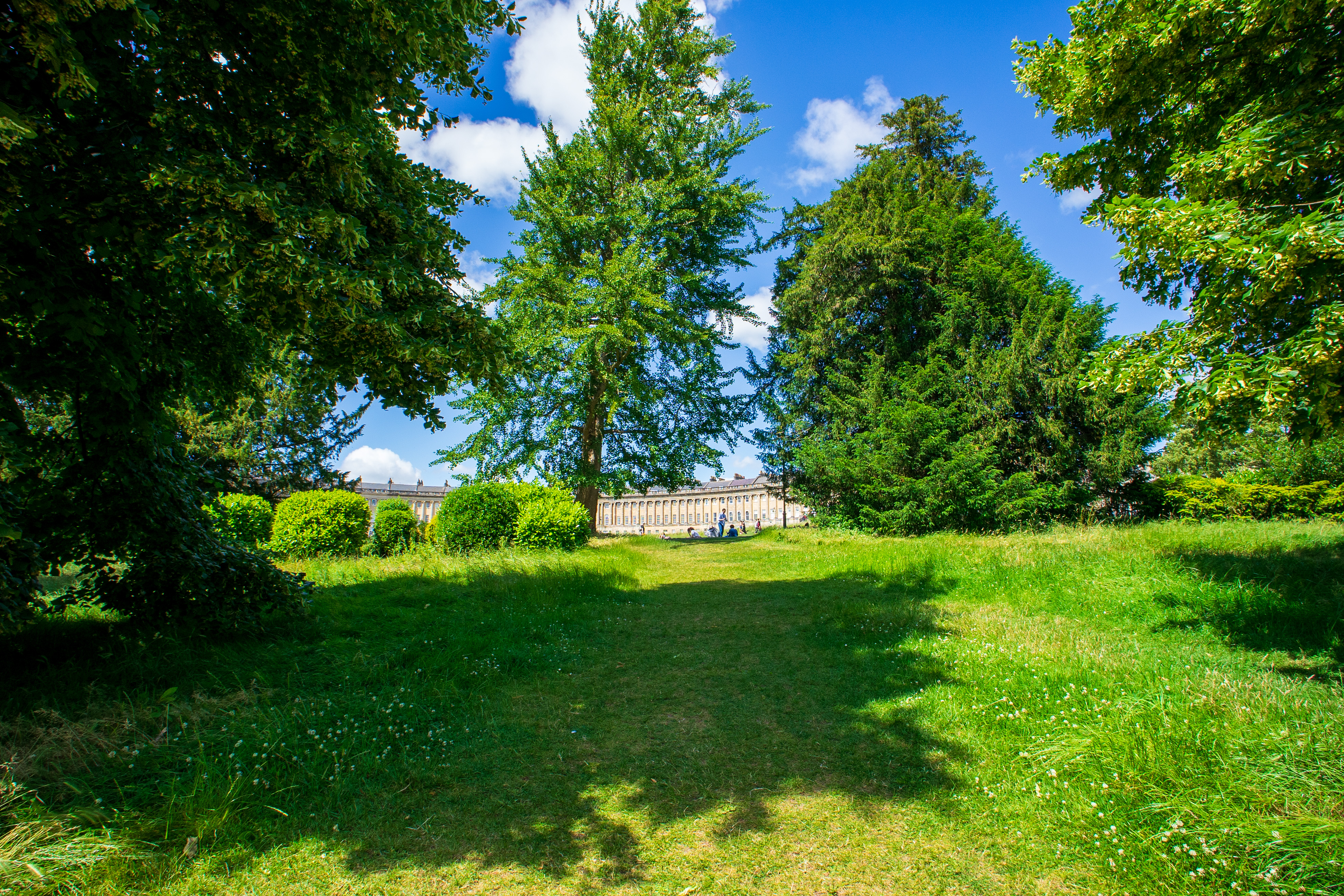


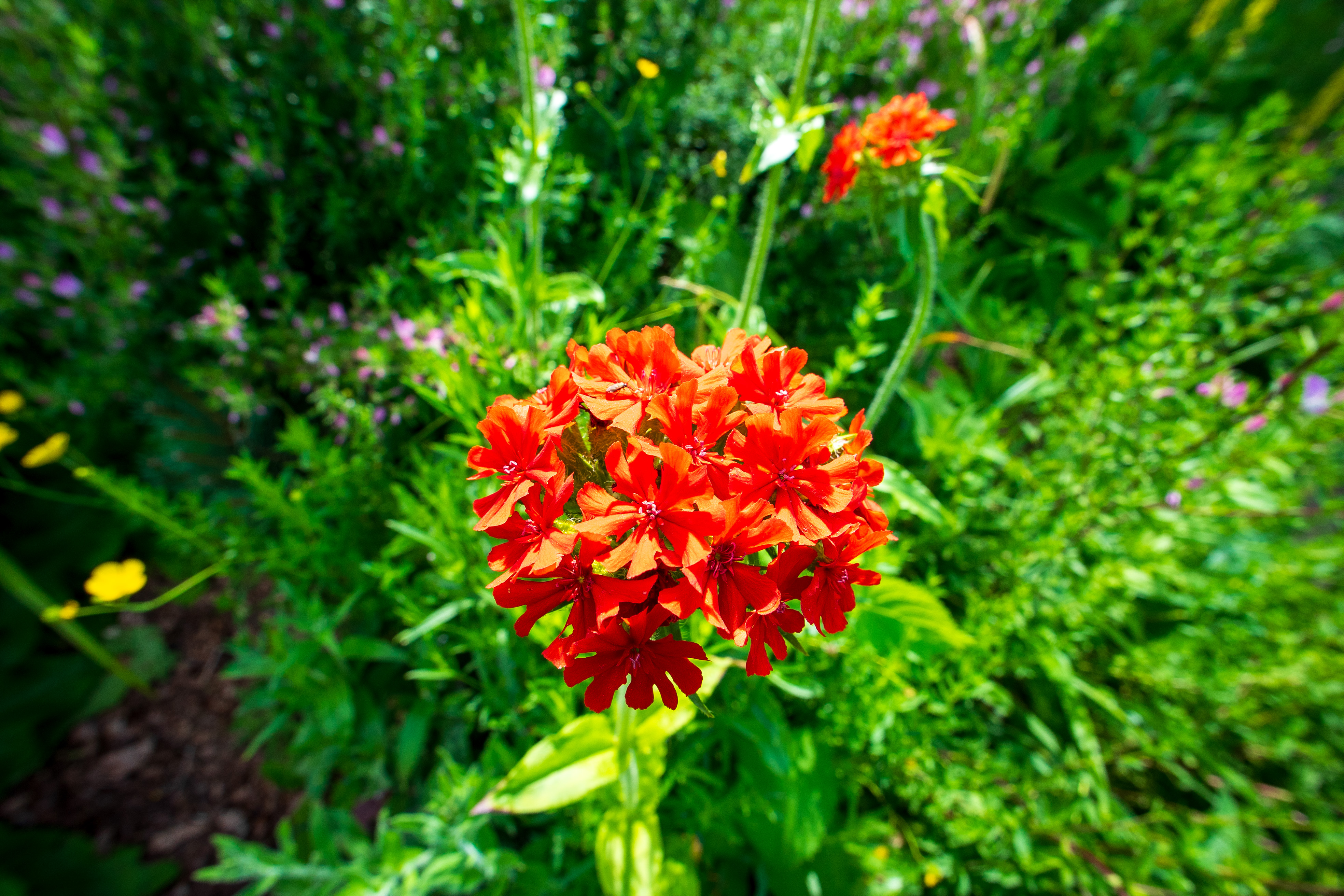


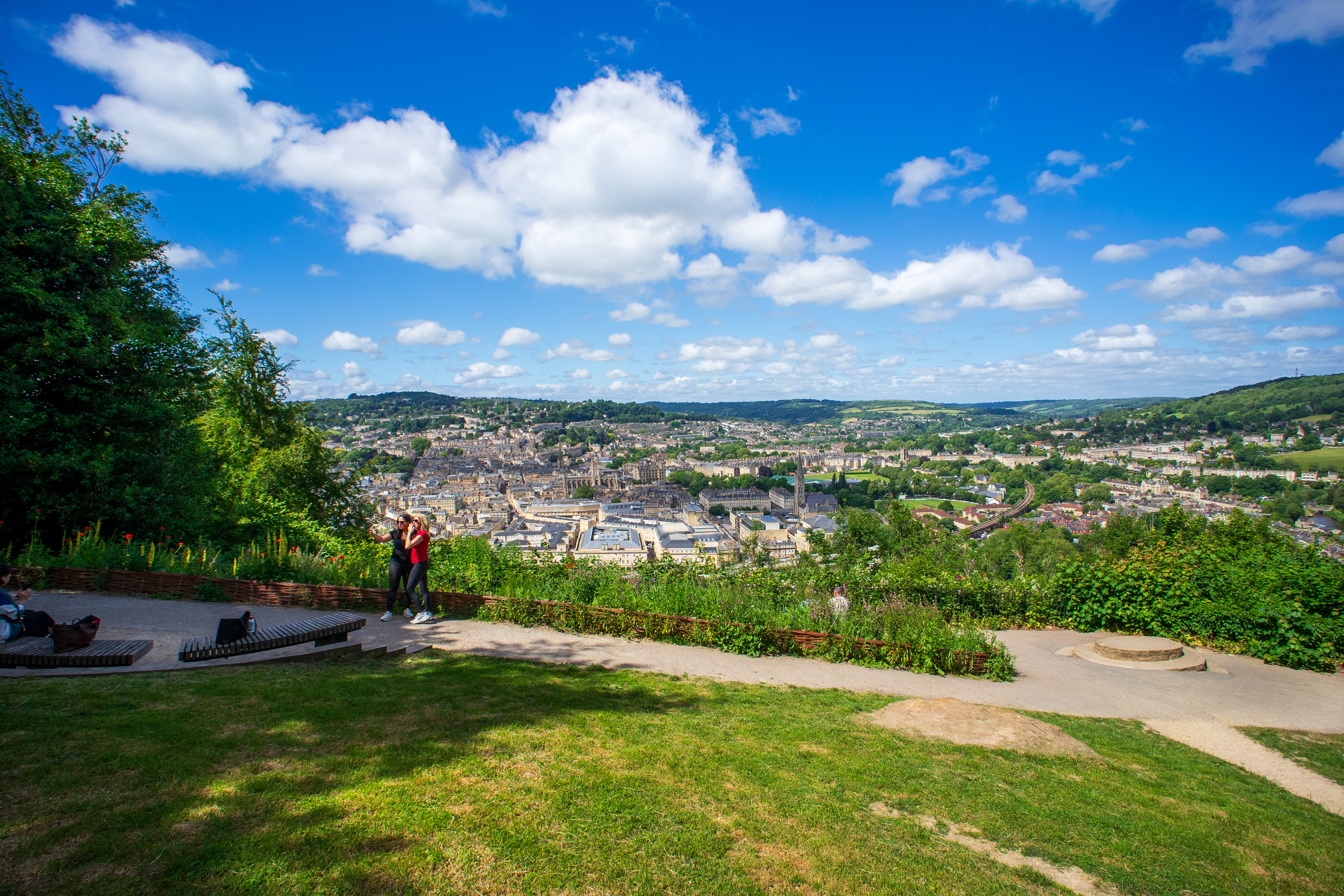
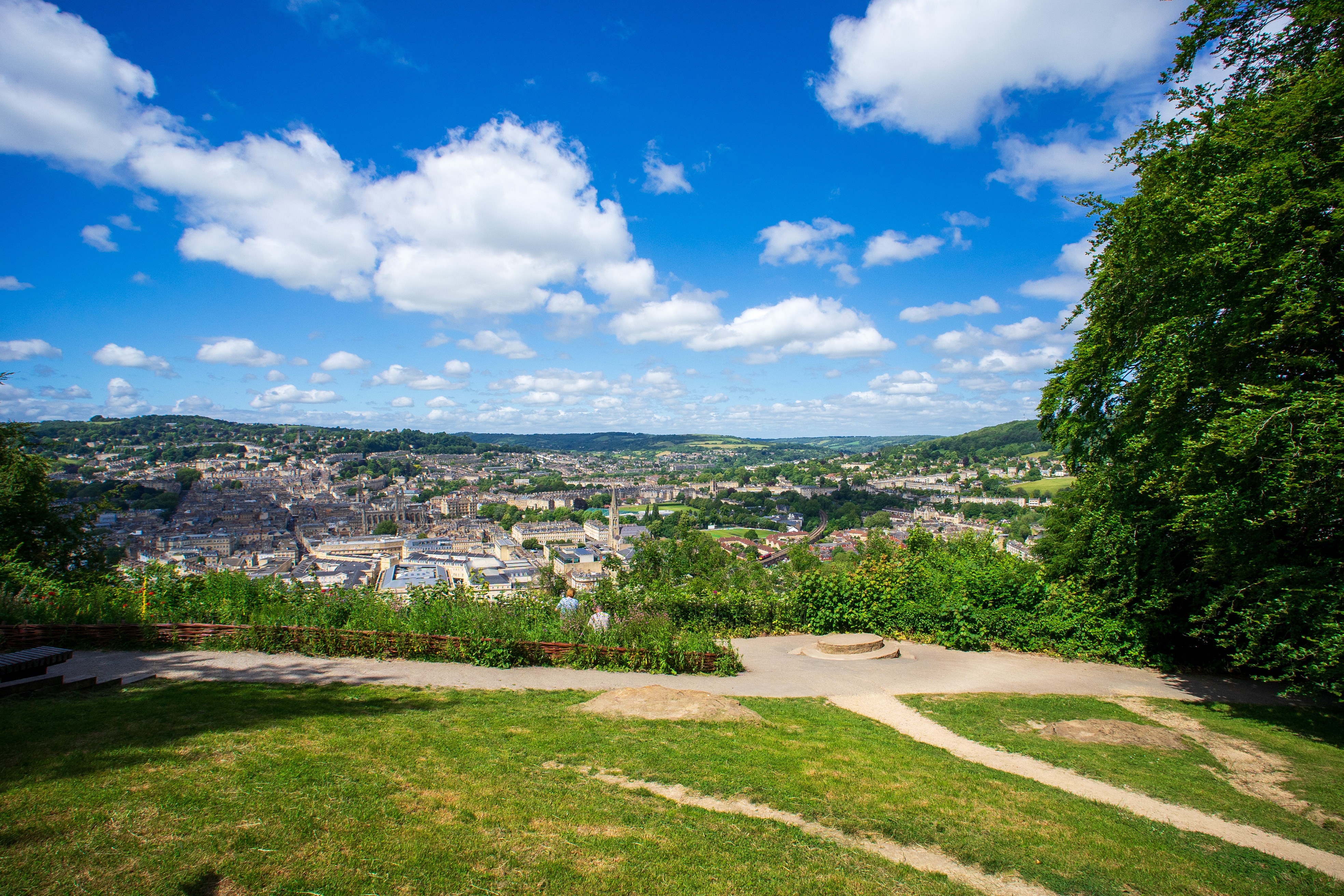
Yongnuo YN11mm F1.8S DA DSM WL: Lab Results
We run a range of lab tests under controlled conditions, using the Imatest Master testing suite. Photos of test charts are taken across the range of apertures and zooms (where available), then analyzed for sharpness, distortion and chromatic aberrations.
We use Imatest SFR (spatial frequency response) charts and analysis software to plot lens resolution at the center of the image frame, corners and mid-point distances, across the range of aperture settings and, with zoom lenses, at four different focal lengths. The tests also measure distortion and color fringing (chromatic aberration).
Sharpness:
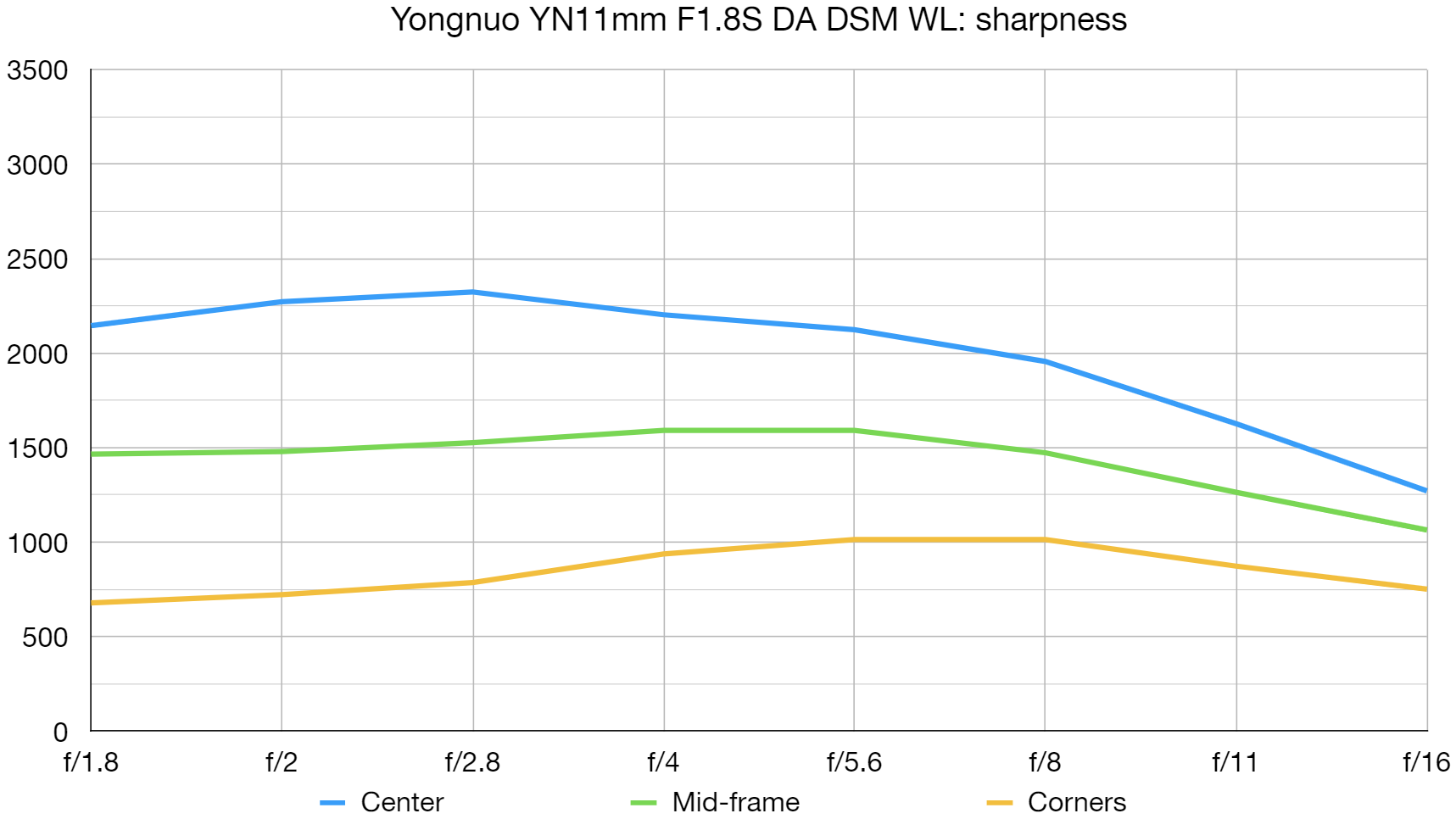
Sharpness in the central region of the image frame is very good, only taking a knock at the narrowest aperture of f/16, due to the usual phenomenon of diffraction. Extreme edge/corner-sharpness is less impressive at wide apertures, and it pays to stop down to f/5.6 or f/8 for optimum edge-to-edge sharpness.
Fringing:
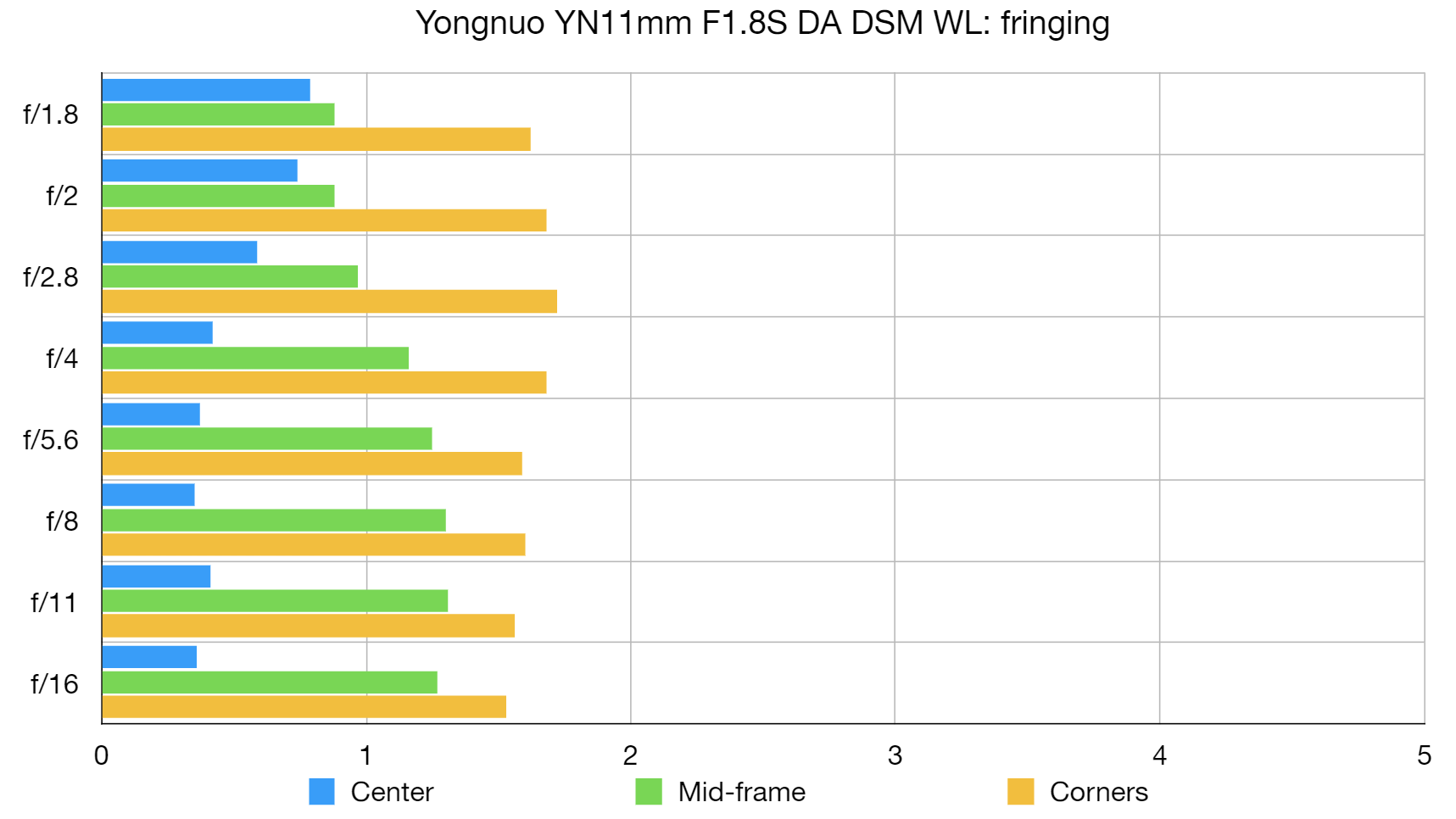
Color fringing can be noticeable towards the edges and corners of the frame but it’s of a fairly small amount. Automatic in-camera correction is generally available to take it out of the equation, and it can be removed in software when processing RAW files.
Distortion: -1.54
The lens scores well for distortion, as the amount of barrel distortion is of a low order for such an ultra-wide-angle lens. It’s way less than with many wide-angle and even standard lenses for mirrorless cameras that we’ve tested, which rely entirely on automatic in-camera correction that can’t be disabled in camera menus.
Yongnuo YN11mm F1.8S DA DSM WL: Verdict
Sometimes, less is more. I really like that the Yongnuo 11mm is so compact and lightweight that I can practically slip it into a spare pocket and carry it around without feeling weighed down. That makes it useful to keep on hand for anytime my standard zoom runs out of viewing width, for the likes of walkabout and travel photography. Image quality and build quality are highly impressive, considering the purchase price, as are the lens’s up-market handling characteristics. All in all, it’s a small lens for a small selling price that goes large in its performance and features.
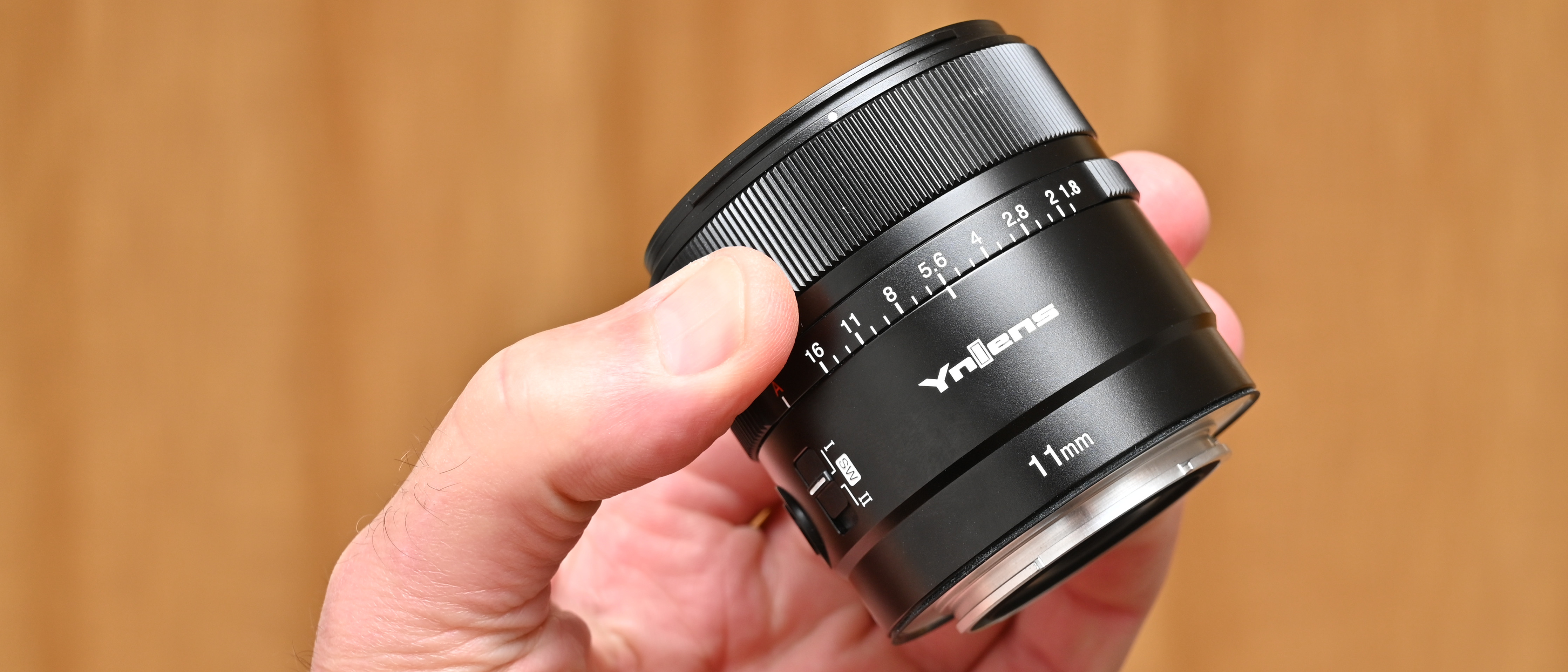
Should you buy the Yongnuo YN11mm F1.8S DA DSM WL?
✅ Buy this...
- You want a compact, lightweight ultra-wide-angle lens that’s practically pocket-sized.
- You like a feast of handling extras at a bargain price, and the versatility of a fast aperture.
🚫 Don't buy this...
- You don’t like an aperture ring with no locking switch, as you find it easy to nudge accidentally.
- You’d rather have the flexibility of a zoom lens and don’t mind having a slower aperture rating.







